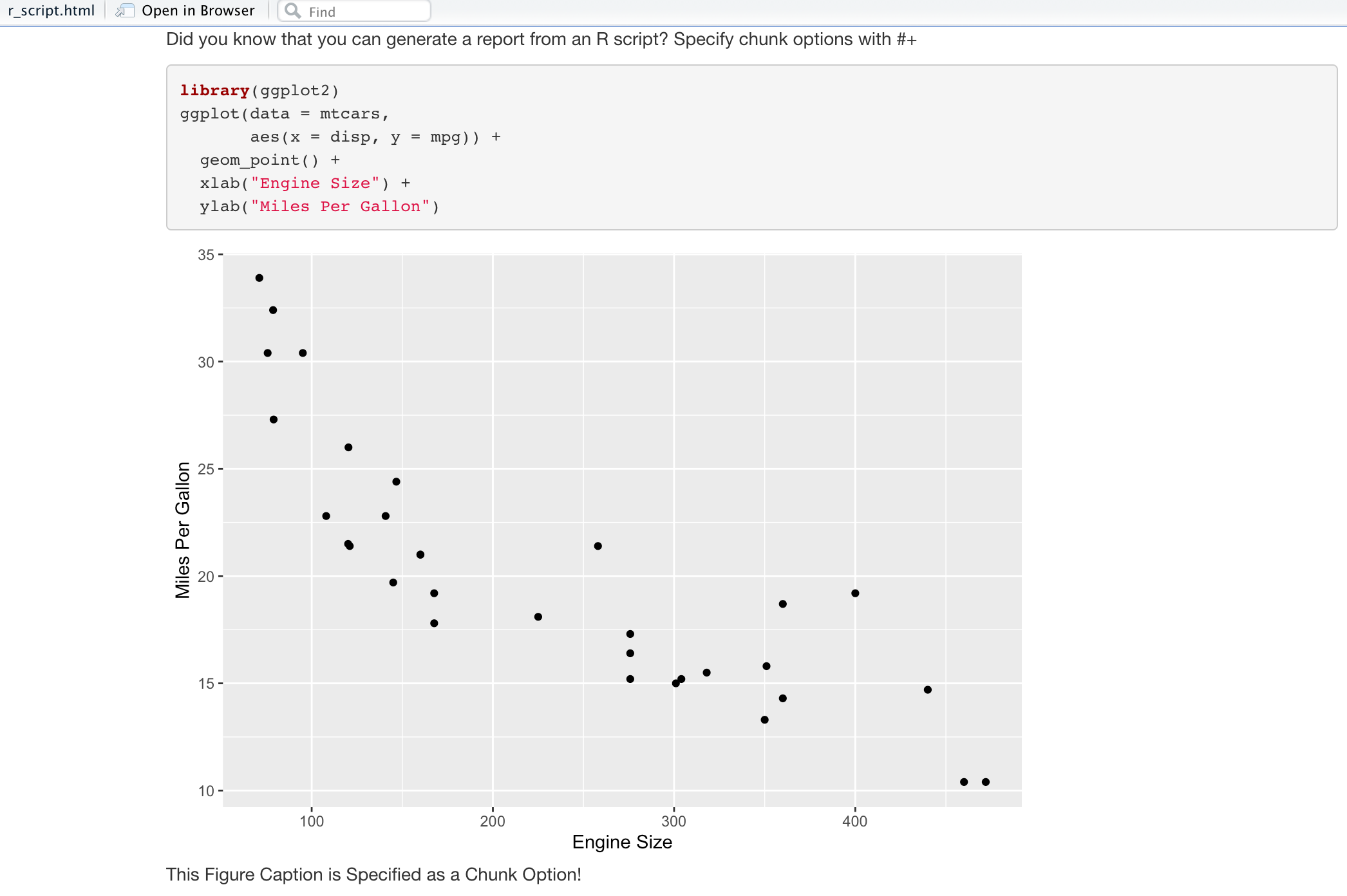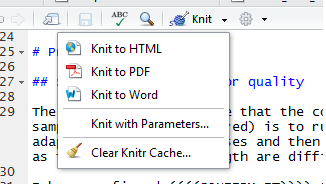

tabset to section headings to convert the lower-level headings into tabs:.

Tabsets allow you to organize information into tabs.
#RMARKDOWN HIDE OUTPUT FULL#
Interested in checking out the full list of options for html_document? You can run ?rmarkdown::html_document in your Console or refer to the help page in the rmarkdown documentation to see a complete list.
#RMARKDOWN HIDE OUTPUT CODE#
Readers can download the source code from the rendered HTML version. In addition to folding code chunks, you can embed a “code download” button in an R Markdown document. Add the option to download a document’s source code When knitted, readers can choose to unfold a code chunk by clicking the “Code” button:įind out more in the R Markdown Cookbook chapter, Fold all code blocks but show some initially.Ģ. There is a negative correlation between horsepower and miles per gallon. Add code_folding: hide to the YAML header to hide code chunks after rendering the document:. It can be distracting to show code in an R Markdown document if that is not your primary focus. Fold code chunks by default in rendered documents
#RMARKDOWN HIDE OUTPUT HOW TO#
This is the final post of a four-part series to help you on your path to R Markdown success, where we discuss how to make your document look and work better.ġ.

There was a flurry of insightful responses ranging from organizing files to working with YAML, and we wanted to highlight some of the responses so that you can apply them to your work, as well. We asked our Twitter friends the tips and tricks that they have picked up along their R Markdown journey. Authors use R Markdown for reports, slide shows, blogs, books - even Shiny apps! Since users can do so much with R Markdown, it’s important to create high-quality documents that take advantage of available features. You can use percentages, e.g., out.The R Markdown file format combines R programming and the markdown language to create dynamic, reproducible documents. Out.width and out.height: The output size of R plots in the output document. You can also specify the two options together in a single chunk option fig.dim, e.g., fig.dim = c(6, 4) means fig.width = 6 and fig.height = 4. R plots in code chunks are first recorded via a graphical device in knitr, and then written out to files. Caching can be handy but also tricky sometimes.įig.width and fig.height: The (graphical device) size of R plots in inches. However, I want to honestly remind you of the two hard problems in computer science (via Phil Karlton): naming things, and cache invalidation. If caching is enabled, the same code chunk will not be evaluated the next time the document is compiled (if the code chunk was not modified), which can save you time. When you are trying to set echo = FALSE, results = 'hide', warning = FALSE, and message = FALSE, chances are you simply mean a single option include = FALSE instead of suppressing different types of text output individually.Ĭache: Whether to enable caching. When include = FALSE, this whole code chunk is excluded in the output, but note that it will still be evaluated if eval = TRUE. Include: Whether to include anything from a code chunk in the output document. Similarly, when warning = FALSE or message = FALSE, these messages will be shown in the R console. Note that if you set error = FALSE, rmarkdown::render() will halt on error in a code chunk, and the error will be displayed in the R console. Warning, message, and error: Whether to show warnings, messages, and errors in the output document. The default collapse = FALSE means R expressions and their text output are separated into different blocks. This is mostly cosmetic: collapse = TRUE makes the output more compact, since the R source code and its text output are displayed in a single output block. By default, text output will be wrapped in verbatim elements (typically plain code blocks).Ĭollapse: Whether to merge text output and source code into a single code block in the output.

Results: When set to 'hide', text output will be hidden when set to 'asis', text output is written “as-is,” e.g., you can write out raw Markdown text from R code (like cat('**Markdown** is cool.\n')). We list a subset of them below:Įcho: Whether to echo the source code in the output document (someone may not prefer reading your smart source code but only results). There are a large number of chunk options in knitr documented at. 19.7 Output arguments for render functions.16.5.4 Create a widget without an R package.2.1.4 2017 Employer Health Benefits Survey.


 0 kommentar(er)
0 kommentar(er)
